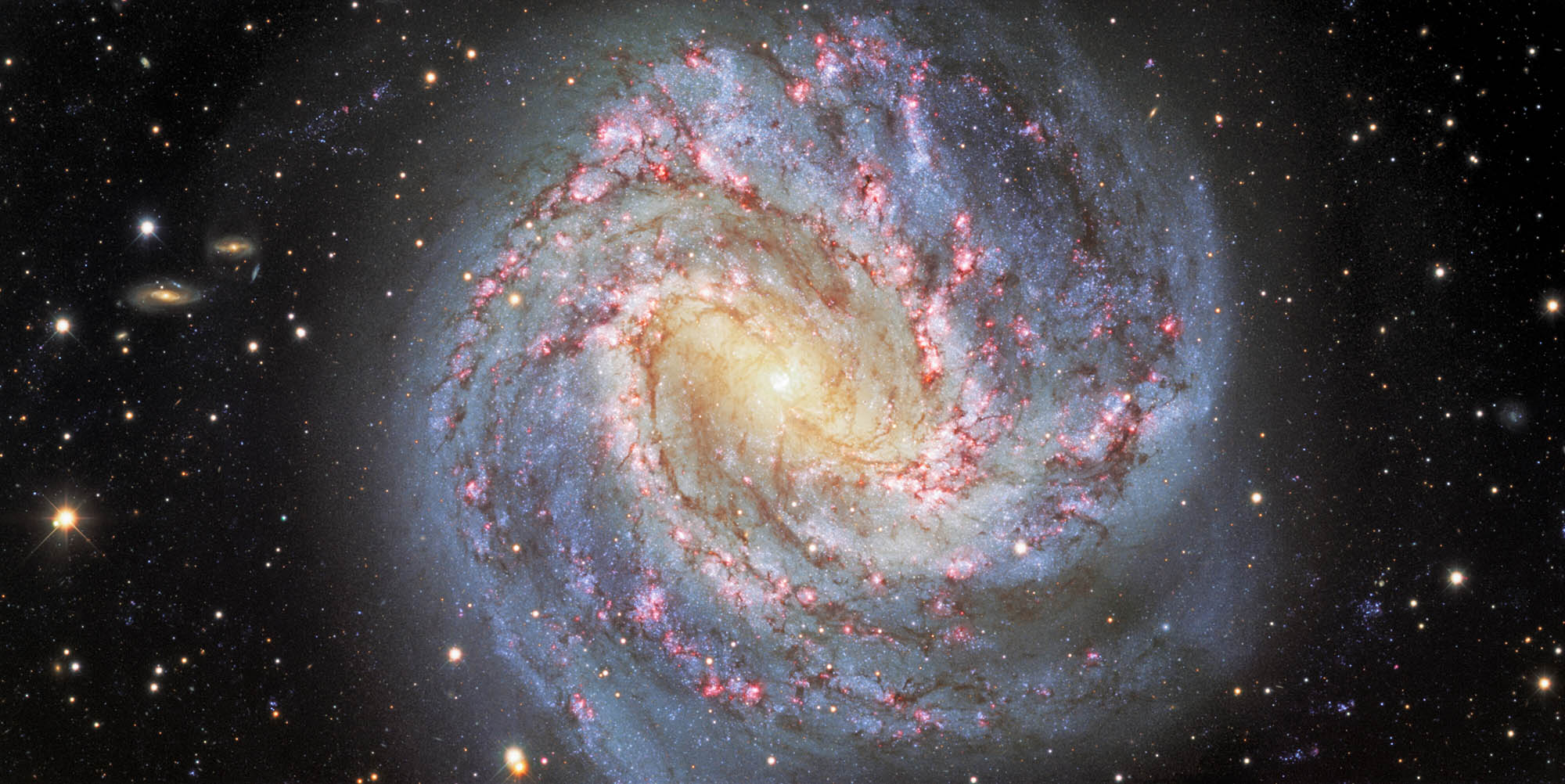NOIRLab: The Spiral of the Southern Pinwheel

Nicknamed the Southern Pinwheel, Messier 83 (or NGC 5236) is a stunning face-on spiral galaxy located about 15 million light-years away in the southern constellation of Hydra. Credit: CTIO/NOIRLab/DOE/NSF/AURA Acknowledgment: M. Soraisam (University of Illinois) Image processing: Travis Rector (University of Alaska Anchorage), Mahdi Zamani & Davide de Martin
The Dark Energy Camera (DECam), which was originally designed for the Dark Energy Survey, has captured one of the deepest images ever taken of Messier 83, a spiral galaxy playfully known as the Southern Pinwheel. Built by the US Department of Energy, DECam is mounted on the Víctor M. Blanco 4-meter Telescope at the Cerro Tololo Inter-American Observatory (CTIO), a Program of NSF’s NOIRLab.
Astronomy enthusiasts might wonder why a camera called the Dark Energy Camera (DECam) would be used to image a single spiral galaxy. DECam has in fact already finished its main job, as the instrument was used to complete the Dark Energy Survey, which ran from 2013 to 2019. Like many people, rather than enjoying a quiet retirement, DECam is remaining occupied. Members of the astronomical community can apply for time to use it, and the data collected are processed and made publicly available [1], thanks to the Astro Data Archive at the Community Science and Data Center (CSDC) Program at NSF’s NOIRLab. DECam’s continued operation also makes sumptuously detailed images like this one possible.
Messier 83, or the Southern Pinwheel, is located in the southern constellation of Hydra and is an obvious target for a beautiful astronomical image. It is oriented so that it is almost entirely face-on as seen from Earth, meaning that we can observe its spiral structure in fantastic detail. The galaxy lies around 15 million light-years away, which makes it a neighbor in astronomical terms. It has a diameter of around 50,000 light-years, so it is a little diminutive in comparison to our own Milky Way, which has a diameter of 100,000–200,000 light-years. In other ways, however, the Southern Pinwheel probably gives a good approximation of how our Milky Way would look to a distant alien civilization.
Six different filters were used on DECam in order to create this spectacular new view of a classical beauty. Filters allow astronomers to select which wavelengths of light they wish to view the sky in. This is crucial for science observations, when astronomers require very specific information about an object, but it also allows colorful images like this one to be created. Observing celestial objects — such as the Southern Pinwheel — with several different filters means that different details can be picked out. For example, the dark tendrils curling through the galaxy are actually lanes of dust, blocking out light. In contrast, the clustered, bright red spots are caused by glowing, hot hydrogen gas (which identifies these as hubs of star formation). Dusty trails and dynamic ionized gas have different temperatures, and are therefore visible in different wavelengths. Filters allow both to be observed separately, and then combined into one intricate image. In all, 163 DECam exposures, with a total combined exposure time of over 11.3 hours, went into creating this portrait of Messier 83.
